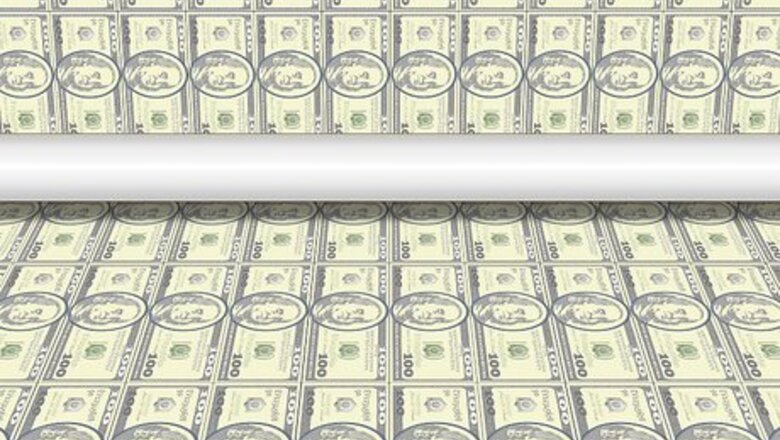
views
X
Trustworthy Source
Consumer Reports
Nonprofit organization dedicated to consumer advocacy and product testing
Go to source
Business owners, private citizens who are selling anything, and the general public can be scammed with counterfeit bills because of increasingly sophisticated printers.[2]
X
Trustworthy Source
Consumer Reports
Nonprofit organization dedicated to consumer advocacy and product testing
Go to source
As a result, almost anyone can fall prey to counterfeit bills and either lose money or be in legal trouble because passing fake money is against the law in many countries.[3]
X
Trustworthy Source
Consumer Reports
Nonprofit organization dedicated to consumer advocacy and product testing
Go to source
But by examining and comparing bills or using devices that detect fakes, you can identify counterfeit money.
Examining and Comparing Bills
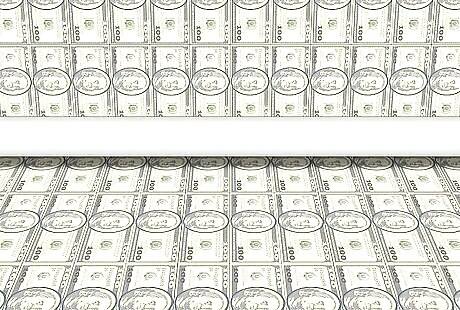
Learn about currency printing. If you want to examine or compare bills you receive for counterfeits, it's a good idea to have a little knowledge about how currency is printed. From the fact that design and material can change over time, taking a few minutes to learn about currency could save you money or even legal hassles. Recognize that looking at the security features of a bill, such as watermarks or raised areas, is usually enough to detect fakes without the aid of a device. Be aware that most countries or regions, such as the European Union, have series of bills in circulation issued after specific dates. Notes are often taken out of circulation as counterfeiting gets more sophisticated, but also because the average life span of notes varies. Check out resources such as the US Currency Education Program (CEP) or the European Central Bank to learn more about the design, legal status, and life cycle of bills, as well as how you can spot fakes.
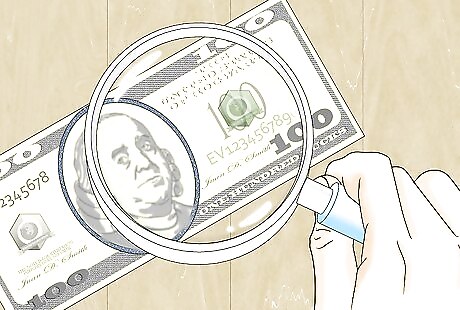
Observe standard features. Most currencies come with different features that help identify them such as colors, seals and watermarks. However, there are often a few standard features that can guide your examination including: Portraits or images Watermarks Colored or color-shifting ink Security thread or ribbon Serial numbers.
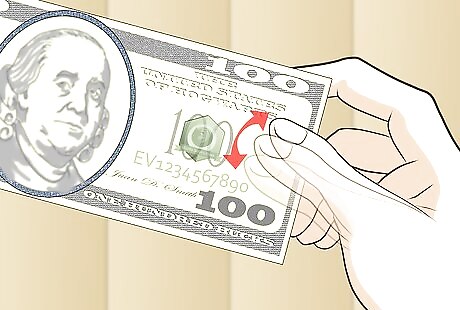
Inspect the paper. Notes are often made of material other than paper. For example, US notes are made with a mixture of 25% linen and 75% cotton and European bills with cotton. In addition, bills may have randomly dispersed security fibers throughout the note. Be aware it may be difficult to detect some of these features with the naked eye and may require more in-depth analysis. Run your finger along the note's surface. Many currencies, including the dollar and Euro, have raised printing, which gives them their special texture.
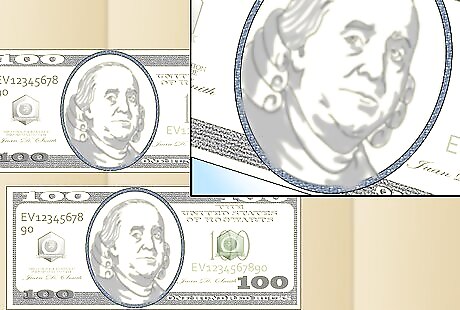
Look at the bill's portraits. Most countries or currency unions have some type of image on their notes as a security measure. Check any notes you have for images, which may also include special features such as holograms. Research central bank sites for specific portrait information. For example, Benjamin Franklin appears on the $100 note and is slightly off center. In India, you'll find Mahatma Ghandi on most notes.
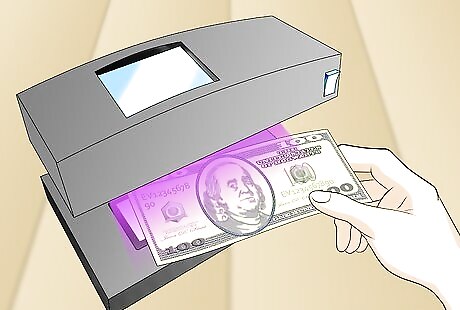
Check the watermark. Most notes in circulation in world currencies were printed at a specific time and have a watermark to help authenticate them. The watermark is often visible from either side when the note is held up to a source of light. Put each side of the bill up to a window that has access to sunlight and make sure you can see the watermark on both sides before using it. Consider using other sources of light such as a UV-light or a lamp and use the same procedure to check for the watermark.
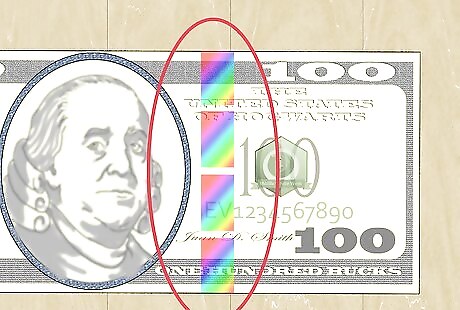
Watch the ink color shift or holograms. Many bills used have colored or color-shifting ink and/ or holograms. Moving the bill back and forth can help verify that the note isn't counterfeit. Look for the ink on the face of bills and recognize color-shifting ink and holograms by tilting the bill back and forth. If you can't find this, the note may be counterfeit. Be aware that some smaller note denominations may not have the same security features as larger notes.
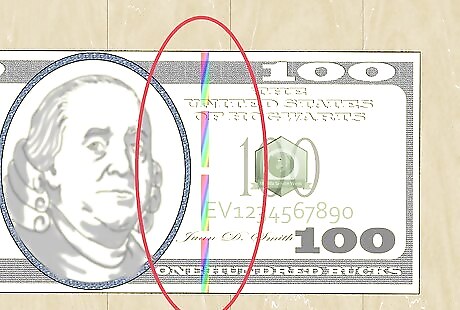
Find the security thread or ribbon. Many countries, such as the United States, Thailand, and India, use security threads to further authenticate their bills. Using either a UV-light source or your naked eye, look for this marker to ensure your bill isn't counterfeit. Look for clear or colored threads that are embedded in notes. In some cases, this feature may only be visible when held to light. Check with the state's central bank to see if there are further special features with security threads. For example, threads in US dollars glow with the number of the denomination under UV-light.
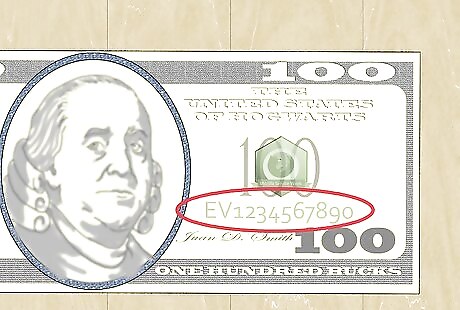
Read the serial numbers. In addition to other features, many countries have bills that contain serial numbers, which help identify when and where it was made. Check for serial numbers—which may be a combination of letters and numbers—to help ensure the money is not counterfeit. Check with the central bank of any country you're visiting for information on serial numbers. For example, the United States provides data on the serial numbers of dollars. You can similarly get this information from countries like Thailand and India as well as the European Union.

Use central bank resources. Most countries or customs unions have central banks that provide information on their currency. If you are looking for information about elements such as specific placement of face or back plate numbers or even want to see up close examples of how to review standard authentication features, you can draw upon the resources that central banks or currency issuers provide.
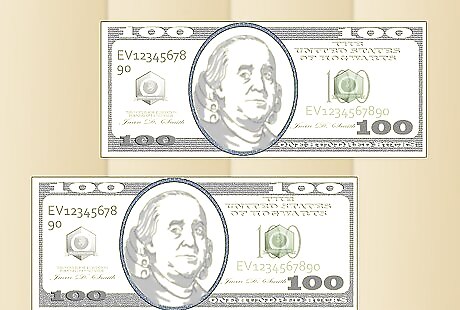
Correlate two bills. You can easily check for fake money by comparing two bills of the same denomination. Use or obtain an authentic bill from the bank and compare the various aspects of the bill that looks suspicious. See if you can detect any differences between the notes by sight. Look at both sides of each bill. This may confirm your suspicion that you received counterfeit money. Place the authentic bill on top of the suspicious bill. Hold them up to the light, which may expose any differences between the notes. Make sure to report any counterfeit money and the person from who you received it to your local authorities. If you do not know the person who passed you the money, provide the authorities with any information you can that may help them apprehend the counterfeiter.
Detecting Counterfeits with Devices
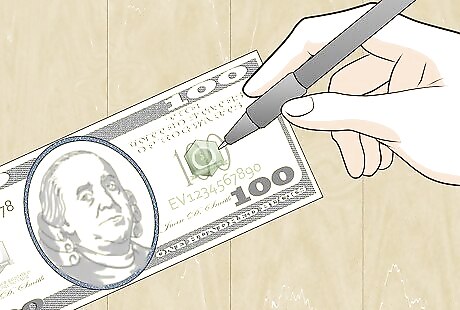
Mark the note with a detector pen. Some companies have begun making felt tip pens that can detect counterfeit bills. Draw a line or an “x” on suspicious bill to see if it leaves a mark, which can indicate a counterfeit bill. Be aware that detector pens are not foolproof, but work in many cases because their active ingredient, which is an iodine solution, reacts with wood-based paper. Realize that a detector pen may leave a pastel mark on an authentic bill and that it will fade within a day. This can help you identify which bills you've checked. Purchase counterfeit detector pens at most large retailers or office supply stores. They generally cost around $5 and can check up to 3,000 bills.
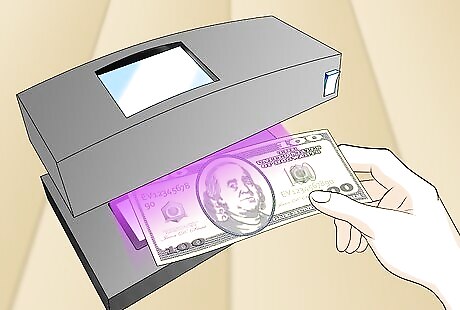
Run notes through a detector machine. If you work with a lot of notes, you may want to consider getting a machine that detects counterfeit bills. Running bills through these machines can help you ensure the authenticity of your money in a quick and effective manner. Recognize that there is a wide variety of counterfeit detecting machines a broad range of price points. Buy the type of machine according to the type of work for which you need it. Machines can do everything from detecting watermarks and other features with UV-light to detecting magnetic strips and magnifying micro-printing feature. Place a stack of bills into the machine and it will self-feed and alert you if it discovers Buy your machine at a large retailer or office supply store. You can ask other businesses or colleagues if they have any suggestions on good models.

Scan notes under UV-light. Most notes in circulation have features, such as watermarks or security threads, that are visible when viewed under ultraviolet light. If you work with large sums of cash or prefer to not mark bills, consider getting a UV-light to scan for counterfeit notes. Choose a model appropriate to your needs. You may want to consider self-feed scanners or hand-held UV-lights that illuminate security features. You can buy UV scanners at many large retailers and office supply stores.
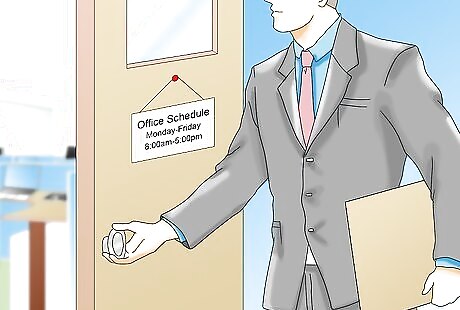
Go to your local bank. If you are truly unsure if a note is authentic after looking at it or scanning it, take it to your local bank. Most banks have personnel and devices that can see if the notes are counterfeit. Explain to the bank manager that you are concerned money you received is counterfeit but are not sure how to tell. Ask if the branch can verify the money and then follow any suggestions the staff has if they discover fake notes. Remember to be kind and provide any information you can about the origin of the notes.

Scan bills through a cash counter machine. When a retailer or service provider experiences an influx of fake currency, it can leave a sizable dent in their profits, but a cash counter machine with built-in counterfeit detection can eliminate this risk. Money counting machines utilize ultraviolet, RGB, and infrared waves to confirm that every aspect of a unique bank note is exactly as it should be.



















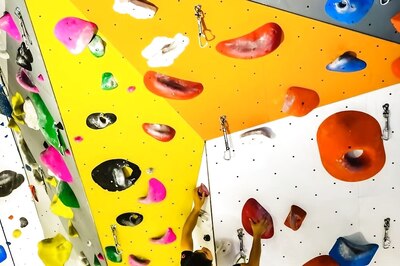
Comments
0 comment